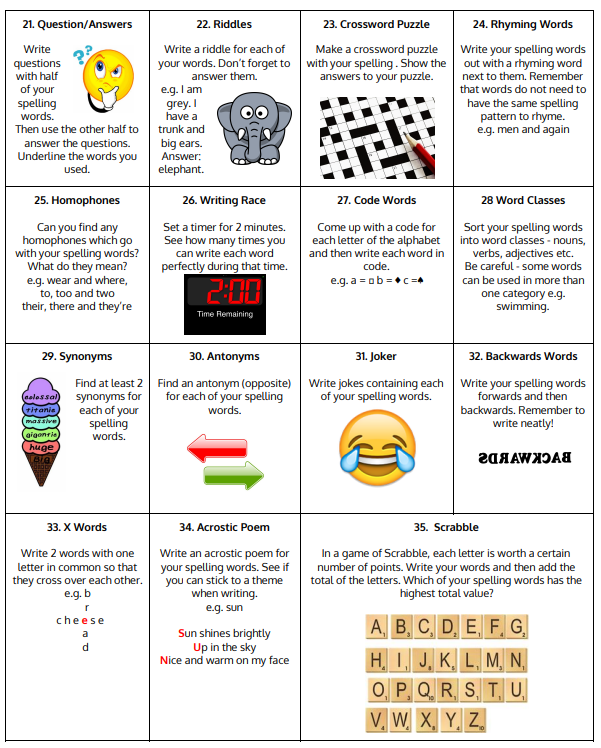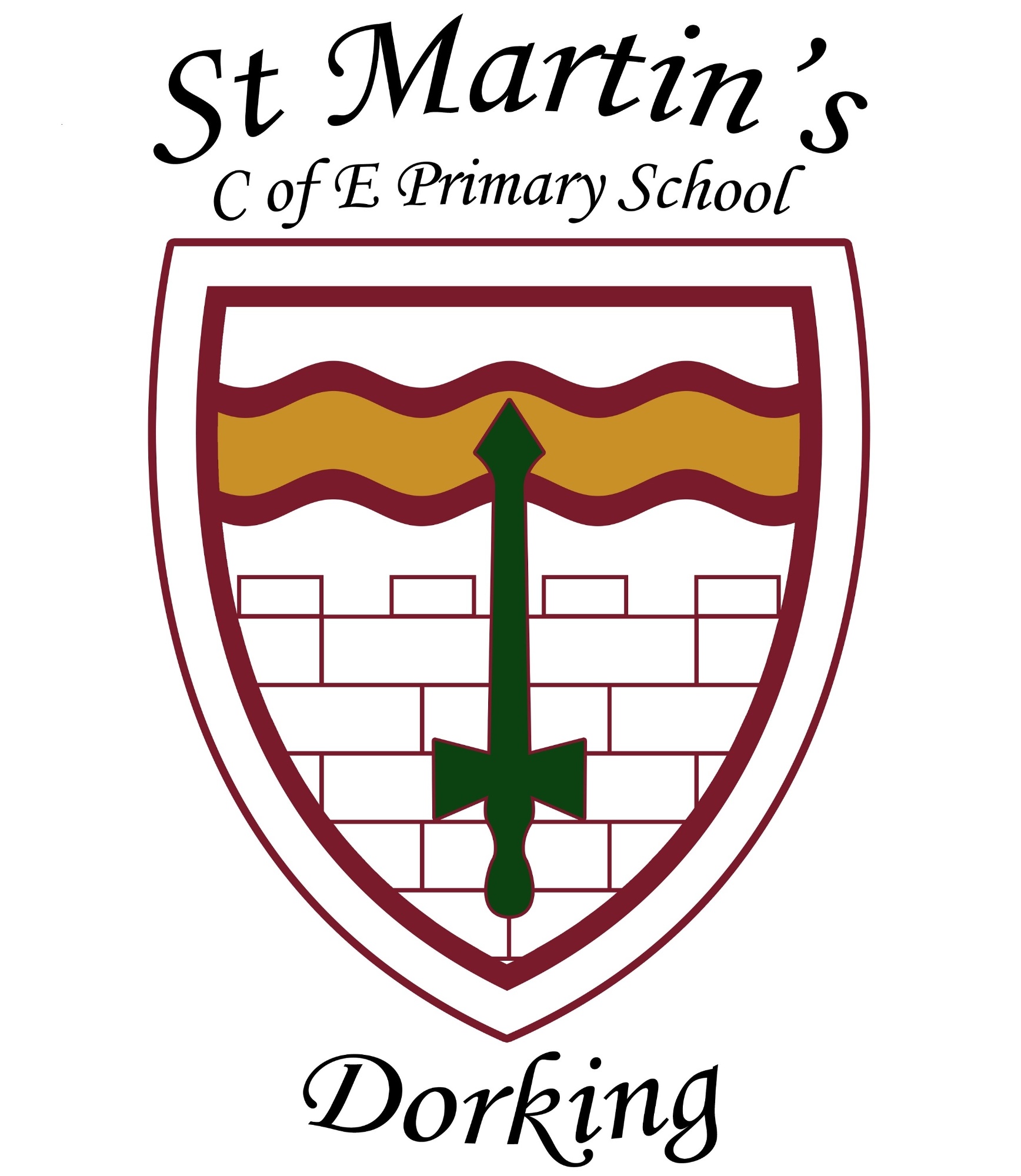English
English is taught daily and we provide real life opportunities for children to use and transfer their emerging literacy skills across the curriculum. Active learning is promoted by using learning partners, dialogue, drama, first hand experiences and through ‘wow’ days. We aim to develop every child’s skill to speak confidently and listen to what others have to say; read and write with confidence, fluency and understanding; have an interest in words and their meanings and develop a wide vocabulary; be interested in books, read with enjoyment and evaluate and justify their preferences and use their literacy skills in different areas of the curriculum.
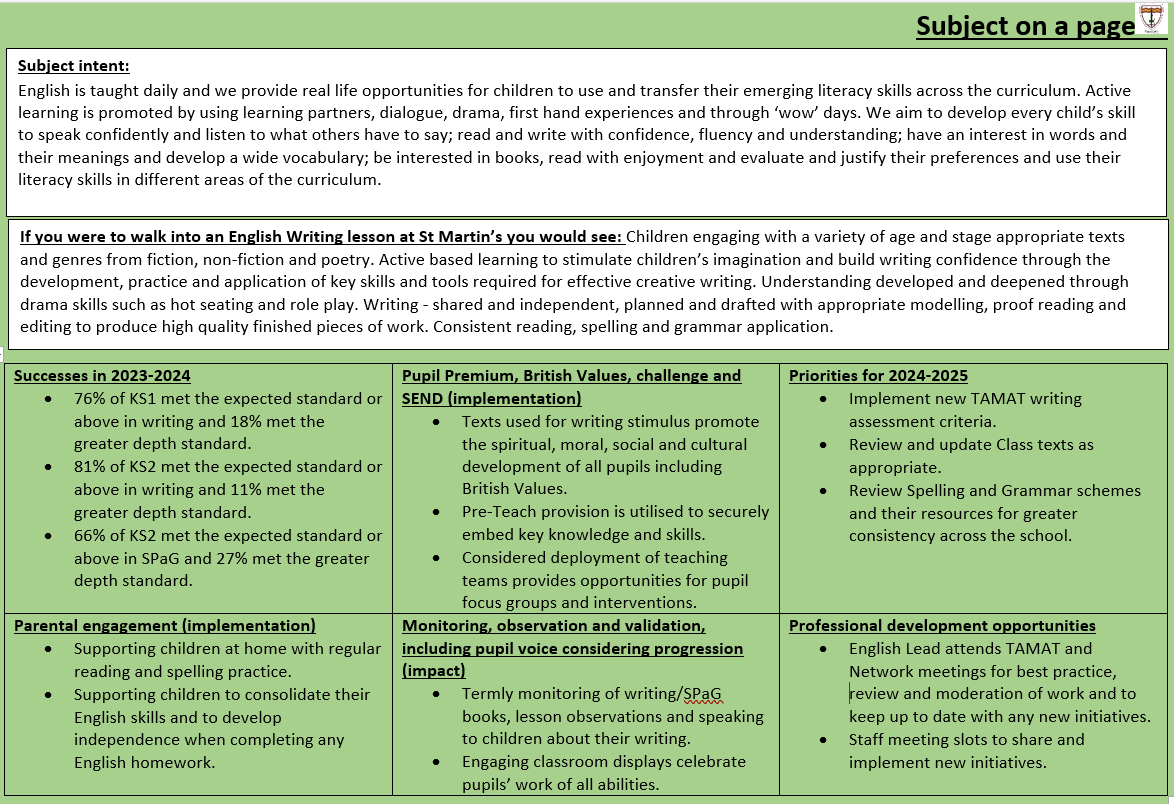
Writing


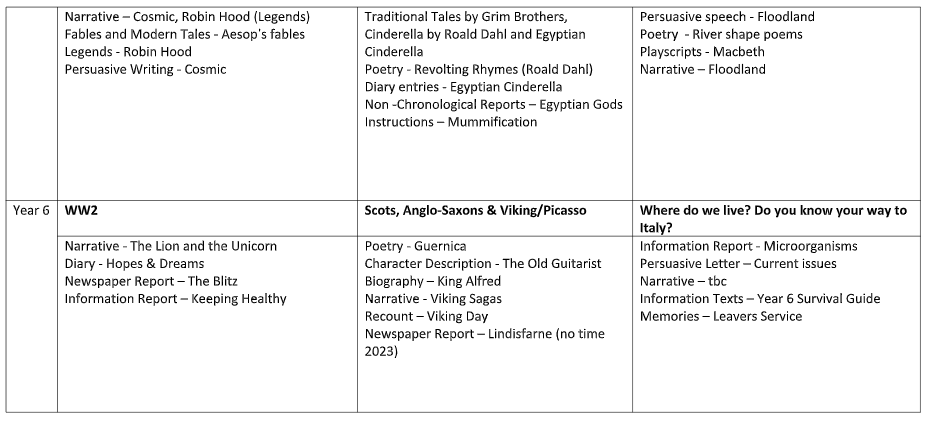
Spelling, Punctuation and Grammar
Grammar Roadmap
EYFS
- Write recognisable letters, most of which are correctly formed
- Spell words by identifying sounds in them and representing the sounds with a letter or letters
- •Write simple phrases and sentences that can be read by others.
Year 1
- Introduce suffixes that can be added to verbs where no change is needed in the spelling of root words (e.g. helping, helped, helper)
- Introduce how the prefix un– changes the meaning of verbs and adjectives [negation, for example, unkind, or undoing: untie the boat]
- Introduce joining words and joining clauses using ‘and’
- separating words with spaces
- sentence punctuation - introduction to capital letters, full stop, question mark and exclamation mark
- Capital letters for names and personal pronoun
Year 2
- Introduce nouns
- Suffixes - formation of nouns using suffixes such as –ness, –er
- Formation of adjectives using suffixes such as –ful, –less
- Use of the suffixes –er, –est in adjectives
- Use se of –ly in Standard English to turn adjectives into adverbs
- Introduce subordination - (using when, if, that, because) and co-ordination - (using or, and, but)
- Introduce expanded noun phrases for description and specification
- Introduce ‘statement’, ‘question’, ‘exclamation’ or ‘command’
- Introduce verb tense - present tense and past tense
- Introduce commas to separate items in a list
- Introduce apostrophes to mark where letters are missing in spelling and to mark singular possession in nouns
Year 3
- Prefixes - formation of nouns using a range of prefixes [for example super–, anti–, auto–]
- Introduce consonant, consonant letter vowel, vowel letter
- Introduce the use of the forms a or an according to whether the next word begins with a consonant or a vowel [for example, a rock, an open box]
- Introduction of word families based on common words, showing how words are related in form and meaning [for example, solve, solution, solver, dissolve, insoluble]
- Expressing time, place and cause using conjunctions [for example, when, before, after, while, so, because]
- Adverbs [for example, then, next, soon, therefore]
- Introduce prepositions [for example, before, after, during, in, because of]
- Introduction to paragraphs as a way to group related material
- Headings and sub-headings to aid presentation
- Use of the present perfect form of verbs instead of the simple past [for example, He has gone out to play contrasted with He went out to play]
- Introduction to inverted commas to punctuate direct speech
Year 4
- The grammatical difference between plural and possessive –s
- Standard English forms for verb inflections instead of local spoken forms [for example, we were instead of we was, or I did instead of I done]
- Introduce determiners
- Noun phrases expanded by the addition of modifying adjectives, nouns and preposition
- phrases (e.g. the teacher expanded to: the strict maths teacher with curly hair)
- Introduction of fronted adverbials punctuated with a commas
- Use of paragraphs to organise ideas around a theme
- Appropriate choice of pronoun or noun within and across sentences to aid cohesion and avoid repetition
- Use of inverted commas and other punctuation to indicate direct speech
- Apostrophes to mark plural possession [for example, the girl’s name, the girls’ names]
Year 5
- Converting nouns or adjectives into verbs using suffixes [for example, –ate; –ise; –ify]
- Introduce verb prefixes [for example, dis–, de–, mis–, over– and re–]
- Introduce relative clauses beginning with who, which, where, when, whose, that, or an omitted relative pronoun
- Introduce indicating degrees of possibility using adverbs [for example, perhaps, surely]
- Introduce modal verbs [for example, might, should, will, must]
- Linking ideas across paragraphs using adverbials of time [for example, later], place [for example, nearby] and number [for example, secondly] or tense choices [for example, he had seen her before]
- Introduce brackets, dashes or commas to indicate parenthesis
- Introduce the idea of commas to clarify meaning or avoid ambiguity
Year 6
- Introduce subject and object
- Introduce the difference between formal and informal speech and writing
- Introduce synonyms and antonyms
- Introduce the passive to affect the presentation of information in a sentence [for example, I broke the window in the greenhouse versus The window in the greenhouse was broken (by me)].
- Introduce the subjunctive forms such as ‘If I were’ or ‘Were they’ to come in some very formal writing and speech]
- Linking ideas across paragraphs using a wider range of cohesive devices: repetition of a word or phrase, grammatical connections [for example, the use of adverbials such as on the other hand, in contrast, or as a consequence], and ellipsis
- Layout devices [for example, headings, sub-headings, columns, bullets, or tables, to structure text
- Introduce semi-colons, colons and dash to mark the boundary between independent clauses
- Introduce the use of the colon to introduce a list and use of semi-colons within lists
- Introduce how hyphens can be used to avoid ambiguity [for example, man eating shark versus man-eating shark, or recover versus re-cover]
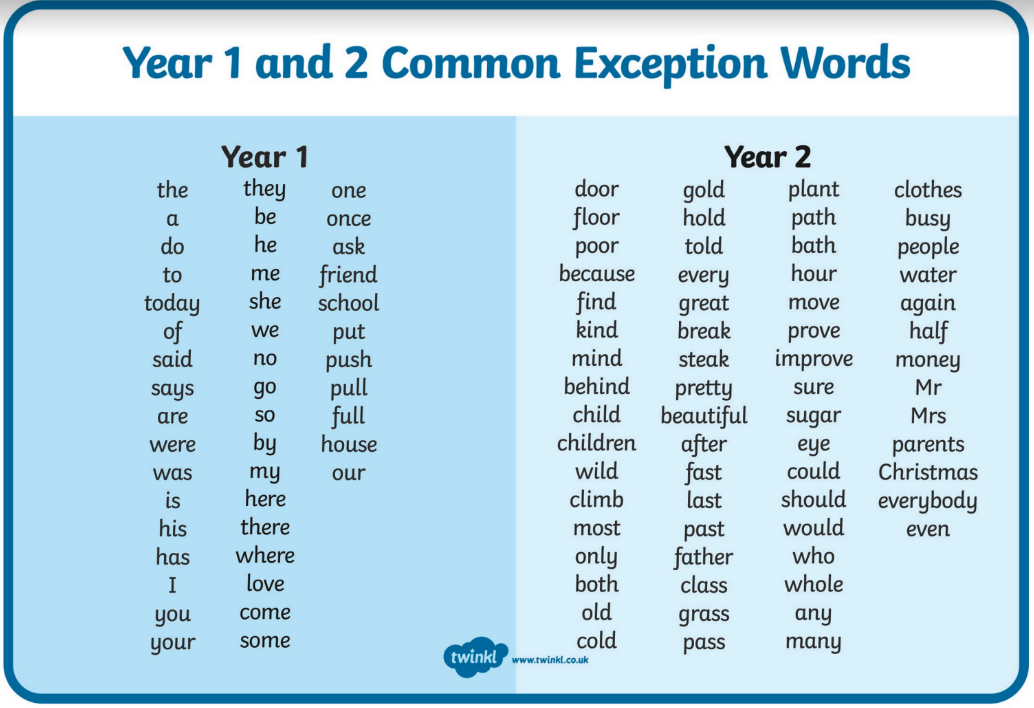
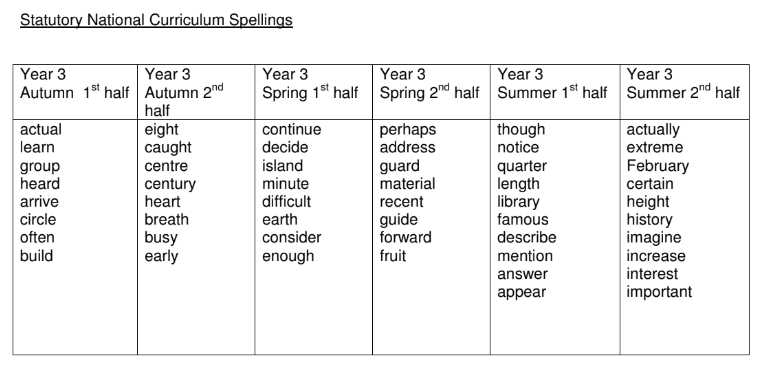
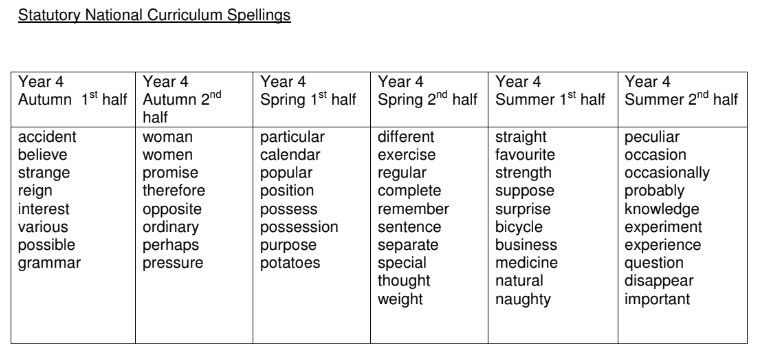
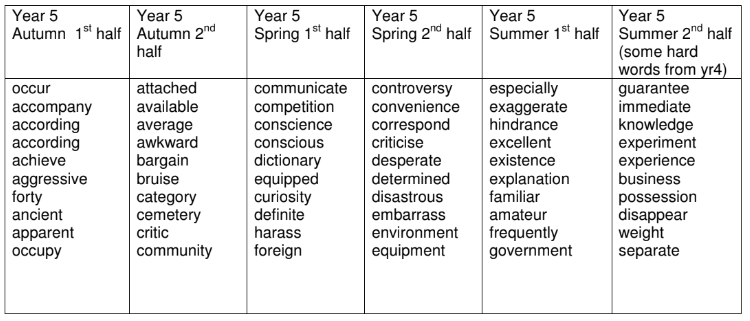
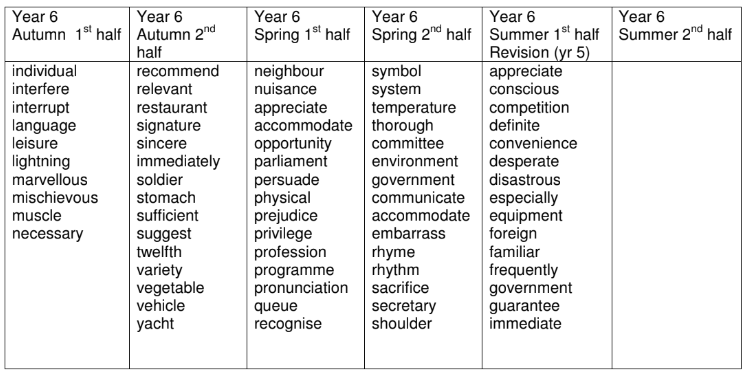
Strategies to support spelling in school and at home

